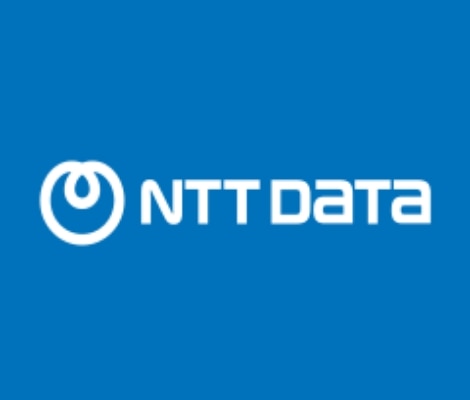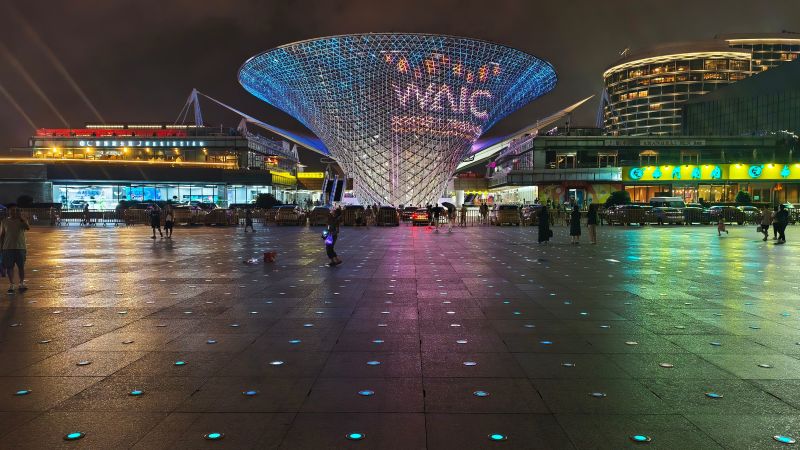全部新闻

2025-07-29 07:59:49

2025-07-29 06:06:31

2025-07-29 05:02:29

2025-07-29 05:00:07

客户挑战
2025-07-29 04:00:07
站点组件无法加载,这可能是由于浏览器扩展程序,网络问题或浏览器设置所致。检查Internet连接,禁用广告阻滞剂或切换浏览器。
站点组件无法加载,这可能是由于浏览器扩展程序,网络问题或浏览器设置所致。检查Internet连接,禁用广告阻滞剂或切换浏览器。

2025-07-29 03:58:00
China pitches global AI governance group as the US goes it alone | CNN Business China has proposed a global AI governance plan during the World Artificial Intelligence Conference (WAIC) in Shanghai, aiming to foster international cooperation amid growing competition with the US. Chinese Premier Li Qiang highlighted the need for a coordinated global framework to address regulatory disparities and prevent technological monopolies. The move comes as China加大对人工智能的投入,包括超过5000家AI公司和核心AI行业价值6000亿人民币(840亿美元),并已缩小与美国在AI领域的差距。同时,东盟秘书长也呼吁加强AI治理以应对潜在威胁,并强调国际合作的重要性。 Latest Market News info The top numbered articles will be viewable to readers when programmed onto a page. Make sure you have 30 or more cards added to the container for the machine learning (ML) feature to work. Your queued up articles, seen in the violet section, will use ML to surface up relevant content to the reader based on their individual interests and preferences. Something isn't loading properly. Please check back later. China has proposed a global action plan to govern artificial intelligence, just days after the United States unveiled its own plan to promote US dominance of the rapidly growing field thatâs become a key bargaining chip in trade talks between the economic powerhouses. Chinese Premier Li Qiang unveiled Chinaâs vision for future AI oversight at the World AI Conference ( WAIC ), an annual gathering in Shanghai of tech titans from more than 40 countries. âOverall, global AI governance is still fragmented. Countries have great differences, particularly in terms of areas such as regulatory concepts, institutional rules,â said Li in his speech on Saturday . âWe should strengthen coordination to form a global AI governance framework that has broad consensus as soon as possible.â Liâs remarks came just days after the Trump administration unveiled its 28-page AI action plan , which aims to remove âbureaucratic red tapeâ and establish US dominance in the sector. While Li did not directly refer to the US in his speech, he alluded to the ongoing trade tensions between the two superpowers, which include American restrictions on advanced semiconductor exports â a component vital for powering and training AI, which is currently causing a shortage in China. âKey resources and capabilities are concentrated in a few countries and a few enterprises,â said Li in his speech on Saturday . âIf we engage in technological monopoly, controls and restrictions, AI will become an exclusive game for a small number of countries and enterprises.â AI chips have become a key bargaining tool between US and China in trade negotiations, which continued this week with a meeting in Stockholm . Before the latest round of talks, both countries appeared to make concessions, with Washington lifting its ban on sales of a key Nvidia AI chip to China, and Beijing suspending its antitrust investigation into American chemical firm DuPont. Speaking from Scotland on Sunday, Trump said the US is âvery close to a deal with China,â but offered no further details. The current deadline for a deal expires on August 12. China has not been shy about promoting its AI ambitions: with more than 5,000 AI companies , and a core AI industry valued at 600 billion yuan ($84 billion) in April 2025, the nation is all-in on its tech rivalry with the US. This surge is being fueled by enormous government and private sector spending. Between 2013 and 2023, state venture capital firms invested an estimated $209 billion into AI-related businesses, according to research published by the National Bureau of Economic Research, a private think tank based in Massachusetts, and this year alone, public sector spending on AI is expected to top 400 billion yuan ($56 billion) . Itâs still a fraction of what the US spends â private AI investment in the US reached $109.1 billion in 2024, around 12 times Chinaâs $9.3 billion â but Chinaâs commitment to the AI race is evident in other ways. Since 2017, China has published more patents for generative AI inventions annually than all other countries combined, according to data from the World Intellectual Property Organization . All this investment is narrowing the gap between the US and China in the AI race. Earlier this year, the launch of one-year-old Chinese startup DeepSeekâs new AI model R1 caused chaos on Wall Street and demonstrated Chinaâs technical capabilities by quickly outpacing models by Meta and Anthropic. It was allegedly developed for just $5.6 million, a fraction of the cost spent to make other models like ChatGPT ( over $100 million ) and Gemini (almost $200 million .) More recently, another startup Moonshotâs Kimi K2 model released earlier this month also sent ripples in the AI community for its lower cost and capabilities that outperform some Google and OpenAIâs models. The rapid development of Chinaâs AI market is even predicted to break even within the next few years, delivering a 52% return on investment as early as 2030, according to research from financial services firm Morgan Stanley. Secretary-General of ASEAN , Dr. Kao Kim Hourn, also called for â robust governance â of artificial intelligence to mitigate potential threats, including misinformation, deepfakes, and cybersecurity threats. âThese developments demand urgent, coordinated action from the international community to ensure AI serves human welfare and social good,â he said in his speech at the conference, adding that AI implementation in ASEAN could further expand the regionâs rapidly growing digital economy and âincrease the regionâs GDP by 10-18%.â Former Google CEO Eric Schmidt reiterated the call for international collaboration, explicitly calling on the US and China to work together. âAs the largest and most significant economic entities in the world, the United States and China should collaborate on these issues,â said Schmidt at WAIC. âWe have a vested interest to keep the world stable, keep the world not at war, to keep things peaceful, to make sure we have human control of these tools.â Other speakers included computer scientist Geoffrey Hinton, sometimes referred to as âthe godfather of AIâ and French AI researcher and special envoy Anne Bouverot. Launched by Singaporean think tank Artificial Intelligence International Institute (AIII), the conference has been held in Shanghai since its inception in 2018 and has been an important platform for Chinese companies to showcase their technology to the world. The event â which in the past has been attended by key figures in the tech industry, including Elon Musk and Jack Ma â features technology exhibitions, expert keynotes and discussion panels in a bid to further AI research, development and governance, something China hopes to play a leading role in. Attended by more than 800 companies, WAIC 2025 was again dominated by Chinese tech firms, including Tencent, Alibaba, SoftBank-backed Keenon Robotics and robotics startup Unitree, with appearances from several major US corporations like Tesla, Alphabet,â¯and Amazon. Visitors explored tech innovations across 3,000 exhibits , which included over 100 new product debuts. They included new AI models from Tencent Holdings and Hong Kong-based company SenseTime , Alibabaâs first AI-powered smart glasses , new popcorn-serving bipedal robot models from Keenon Robotics, and cute companion âpetâ robots from Shenzhen startup ZTE . Other key exhibitions at the three-day event included Unitreeâs G1 boxing robot , which quickly caught the attention of visitors and became a fan favorite on social media, dancing⯠robot dogs developed by China Mobile, and PsiBotâs mahjong-playing humanoid .
China pitches global AI governance group as the US goes it alone | CNN Business China has proposed a global AI governance plan during the World Artificial Intelligence Conference (WAIC) in Shanghai, aiming to foster international cooperation amid growing competition with the US. Chinese Premier Li Qiang highlighted the need for a coordinated global framework to address regulatory disparities and prevent technological monopolies. The move comes as China加大对人工智能的投入,包括超过5000家AI公司和核心AI行业价值6000亿人民币(840亿美元),并已缩小与美国在AI领域的差距。同时,东盟秘书长也呼吁加强AI治理以应对潜在威胁,并强调国际合作的重要性。 Latest Market News info The top numbered articles will be viewable to readers when programmed onto a page. Make sure you have 30 or more cards added to the container for the machine learning (ML) feature to work. Your queued up articles, seen in the violet section, will use ML to surface up relevant content to the reader based on their individual interests and preferences. Something isn't loading properly. Please check back later. China has proposed a global action plan to govern artificial intelligence, just days after the United States unveiled its own plan to promote US dominance of the rapidly growing field thatâs become a key bargaining chip in trade talks between the economic powerhouses. Chinese Premier Li Qiang unveiled Chinaâs vision for future AI oversight at the World AI Conference ( WAIC ), an annual gathering in Shanghai of tech titans from more than 40 countries. âOverall, global AI governance is still fragmented. Countries have great differences, particularly in terms of areas such as regulatory concepts, institutional rules,â said Li in his speech on Saturday . âWe should strengthen coordination to form a global AI governance framework that has broad consensus as soon as possible.â Liâs remarks came just days after the Trump administration unveiled its 28-page AI action plan , which aims to remove âbureaucratic red tapeâ and establish US dominance in the sector. While Li did not directly refer to the US in his speech, he alluded to the ongoing trade tensions between the two superpowers, which include American restrictions on advanced semiconductor exports â a component vital for powering and training AI, which is currently causing a shortage in China. âKey resources and capabilities are concentrated in a few countries and a few enterprises,â said Li in his speech on Saturday . âIf we engage in technological monopoly, controls and restrictions, AI will become an exclusive game for a small number of countries and enterprises.â AI chips have become a key bargaining tool between US and China in trade negotiations, which continued this week with a meeting in Stockholm . Before the latest round of talks, both countries appeared to make concessions, with Washington lifting its ban on sales of a key Nvidia AI chip to China, and Beijing suspending its antitrust investigation into American chemical firm DuPont. Speaking from Scotland on Sunday, Trump said the US is âvery close to a deal with China,â but offered no further details. The current deadline for a deal expires on August 12. China has not been shy about promoting its AI ambitions: with more than 5,000 AI companies , and a core AI industry valued at 600 billion yuan ($84 billion) in April 2025, the nation is all-in on its tech rivalry with the US. This surge is being fueled by enormous government and private sector spending. Between 2013 and 2023, state venture capital firms invested an estimated $209 billion into AI-related businesses, according to research published by the National Bureau of Economic Research, a private think tank based in Massachusetts, and this year alone, public sector spending on AI is expected to top 400 billion yuan ($56 billion) . Itâs still a fraction of what the US spends â private AI investment in the US reached $109.1 billion in 2024, around 12 times Chinaâs $9.3 billion â but Chinaâs commitment to the AI race is evident in other ways. Since 2017, China has published more patents for generative AI inventions annually than all other countries combined, according to data from the World Intellectual Property Organization . All this investment is narrowing the gap between the US and China in the AI race. Earlier this year, the launch of one-year-old Chinese startup DeepSeekâs new AI model R1 caused chaos on Wall Street and demonstrated Chinaâs technical capabilities by quickly outpacing models by Meta and Anthropic. It was allegedly developed for just $5.6 million, a fraction of the cost spent to make other models like ChatGPT ( over $100 million ) and Gemini (almost $200 million .) More recently, another startup Moonshotâs Kimi K2 model released earlier this month also sent ripples in the AI community for its lower cost and capabilities that outperform some Google and OpenAIâs models. The rapid development of Chinaâs AI market is even predicted to break even within the next few years, delivering a 52% return on investment as early as 2030, according to research from financial services firm Morgan Stanley. Secretary-General of ASEAN , Dr. Kao Kim Hourn, also called for â robust governance â of artificial intelligence to mitigate potential threats, including misinformation, deepfakes, and cybersecurity threats. âThese developments demand urgent, coordinated action from the international community to ensure AI serves human welfare and social good,â he said in his speech at the conference, adding that AI implementation in ASEAN could further expand the regionâs rapidly growing digital economy and âincrease the regionâs GDP by 10-18%.â Former Google CEO Eric Schmidt reiterated the call for international collaboration, explicitly calling on the US and China to work together. âAs the largest and most significant economic entities in the world, the United States and China should collaborate on these issues,â said Schmidt at WAIC. âWe have a vested interest to keep the world stable, keep the world not at war, to keep things peaceful, to make sure we have human control of these tools.â Other speakers included computer scientist Geoffrey Hinton, sometimes referred to as âthe godfather of AIâ and French AI researcher and special envoy Anne Bouverot. Launched by Singaporean think tank Artificial Intelligence International Institute (AIII), the conference has been held in Shanghai since its inception in 2018 and has been an important platform for Chinese companies to showcase their technology to the world. The event â which in the past has been attended by key figures in the tech industry, including Elon Musk and Jack Ma â features technology exhibitions, expert keynotes and discussion panels in a bid to further AI research, development and governance, something China hopes to play a leading role in. Attended by more than 800 companies, WAIC 2025 was again dominated by Chinese tech firms, including Tencent, Alibaba, SoftBank-backed Keenon Robotics and robotics startup Unitree, with appearances from several major US corporations like Tesla, Alphabet,â¯and Amazon. Visitors explored tech innovations across 3,000 exhibits , which included over 100 new product debuts. They included new AI models from Tencent Holdings and Hong Kong-based company SenseTime , Alibabaâs first AI-powered smart glasses , new popcorn-serving bipedal robot models from Keenon Robotics, and cute companion âpetâ robots from Shenzhen startup ZTE . Other key exhibitions at the three-day event included Unitreeâs G1 boxing robot , which quickly caught the attention of visitors and became a fan favorite on social media, dancing⯠robot dogs developed by China Mobile, and PsiBotâs mahjong-playing humanoid .

达美航空的AI定价促使犹他州议员的消费者保护法案
2025-07-29 03:00:23
犹他州议员提出了一项法案,以防止公司根据个人数据设定价格,此前Delta Air Lines宣布使用AI来设置个人机票。批评家担心这会使价格歧视消费者。尽管Delta声称其AI不会以个性化的优惠为目标,但该议员旨在确保定价实践中的消费者同意和隐私保护。拟议的立法可能会获得两党的支持,因为它与在线隐私监管方面的更广泛的努力保持一致。
犹他州议员提出了一项法案,以防止公司根据个人数据设定价格,此前Delta Air Lines宣布使用AI来设置个人机票。批评家担心这会使价格歧视消费者。尽管Delta声称其AI不会以个性化的优惠为目标,但该议员旨在确保定价实践中的消费者同意和隐私保护。拟议的立法可能会获得两党的支持,因为它与在线隐私监管方面的更广泛的努力保持一致。

Palantir,宣讲我们统治的AI巨人|公司业务新闻
2025-07-29 01:27:56
Palantir是一家数据分析和AI公司,与美国政府和军队有着密切的联系,在特朗普时代的技术文化下已经显着增长。首席执行官亚历克斯·卡普(Alex Karp)公开宣传帕兰蒂尔(Palantir)在国防部中的作用,包括诸如“ Maven Project”之类的有争议的项目。该公司从美国政府获得了大量合同,并参与为联邦移民当局开发监视系统。尽管前雇员和隐私倡导者提出了道德问题,但帕兰蒂尔仍然对其防御工作毫无歉意,并旨在成为技术创新领域的主要参与者。
Palantir是一家数据分析和AI公司,与美国政府和军队有着密切的联系,在特朗普时代的技术文化下已经显着增长。首席执行官亚历克斯·卡普(Alex Karp)公开宣传帕兰蒂尔(Palantir)在国防部中的作用,包括诸如“ Maven Project”之类的有争议的项目。该公司从美国政府获得了大量合同,并参与为联邦移民当局开发监视系统。尽管前雇员和隐私倡导者提出了道德问题,但帕兰蒂尔仍然对其防御工作毫无歉意,并旨在成为技术创新领域的主要参与者。

马努斯搬迁后,中国对AI代理商至高无上的大型技术竞争
2025-07-29 01:00:15
包括Tencent和Bondedance在内的中国科技巨头正在增加对AI代理商的投资,以在竞争对手Manus AI由于地缘政治问题而迁出海外的市场。在上海的世界人工智能会议(WAIC)上,腾讯展示了12个新的AI代理,能够为消费者和企业自动化业务流程。其中包括一个在线营销代理,可以管理从消费者分析到广告系列评估的整个工作流程。此外,Tencent推出了Codebuddy IDE,类似于Bondedance的Trae和Baidu的Comate,它们正在编码由AI提供动力的助理应用程序。该公司还正在更新其开发平台,以允许第三方开发人员创建专业的AI代理,旨在加速AI采用并解锁AI模型的价值。
包括Tencent和Bondedance在内的中国科技巨头正在增加对AI代理商的投资,以在竞争对手Manus AI由于地缘政治问题而迁出海外的市场。在上海的世界人工智能会议(WAIC)上,腾讯展示了12个新的AI代理,能够为消费者和企业自动化业务流程。其中包括一个在线营销代理,可以管理从消费者分析到广告系列评估的整个工作流程。此外,Tencent推出了Codebuddy IDE,类似于Bondedance的Trae和Baidu的Comate,它们正在编码由AI提供动力的助理应用程序。该公司还正在更新其开发平台,以允许第三方开发人员创建专业的AI代理,旨在加速AI采用并解锁AI模型的价值。

AI数据分析师初创公司Julius Nabs $ 1000万种子回合|TechCrunch
2025-07-29 00:42:48
AI数据分析初创公司Julius AI已筹集了由Bessemer Venture Partners领导的1000万美元的种子资金,并提供了Horizon VC,8VC,Y Combinator的额外投资,以及备受瞩目的天使投资者,例如Plexity Ceo Ceo Ceo Aravind Srinivas。Julius由Rahul Sonwalkar于2022年从Y Combinator毕业后创立,使用户可以通过自然语言提示来分析和可视化广泛的数据集。该平台拥有超过200万用户,每月产生超过1000万个可视化。哈佛商学院教授Iavor Bojinov认可了Julius的数据科学教育潜力,并与Sonwalkar合作开了一门新课程。
AI数据分析初创公司Julius AI已筹集了由Bessemer Venture Partners领导的1000万美元的种子资金,并提供了Horizon VC,8VC,Y Combinator的额外投资,以及备受瞩目的天使投资者,例如Plexity Ceo Ceo Ceo Aravind Srinivas。Julius由Rahul Sonwalkar于2022年从Y Combinator毕业后创立,使用户可以通过自然语言提示来分析和可视化广泛的数据集。该平台拥有超过200万用户,每月产生超过1000万个可视化。哈佛商学院教授Iavor Bojinov认可了Julius的数据科学教育潜力,并与Sonwalkar合作开了一门新课程。